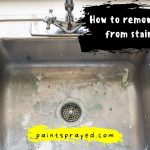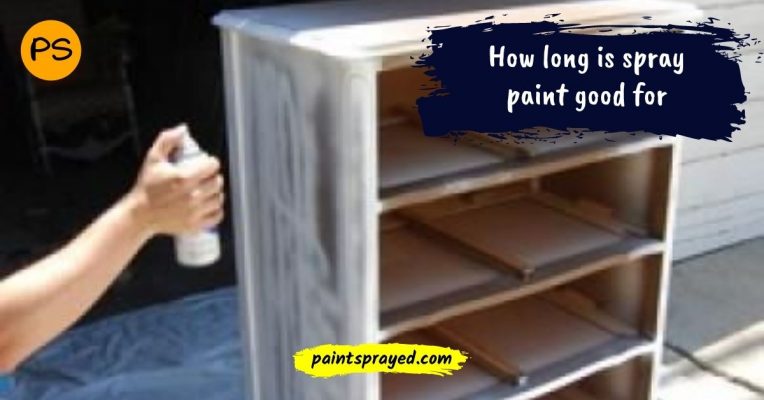Rim paint remover is essential for restoring the appearance of wheels by removing old or unwanted paint. When dealing with painted rims, the way to remove paint can vary depending on the type of paint and the condition of the wheels.
One common method for removing paint is to use a chemical remover, which can effectively strip away layers of paint. For those dealing with spray colour, a dedicated spray remover can be particularly useful. Another effective approach is sanding, which involves using sandpaper or a sand tool to physically remove the paint and prepare the surface for a new coat.
Pressure washers can also aid in removing paint, especially when combined with a remover solution. They are useful for cleaning away colour remnants after the initial removal process. Additionally, some people use a combination of chemical removers and sanding to ensure a clean surface before applying a new layer of colour.
In summary, whether you’re removing spray paint or dealing with various types of coatings, there are multiple ways to remove colour from rims, including using colour removers, sanding, and pressure washing. Each method can help in achieving a clean, colour-free surface ready for refinishing or painting.
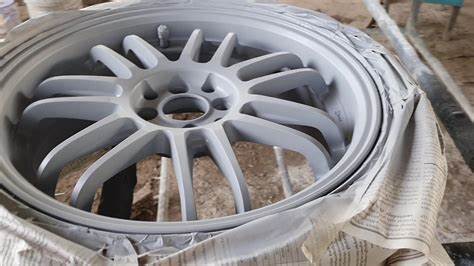
What factors should I consider when choosing a rim spray paint remover?
Selecting the right paint thinner remover for your rims is crucial for effective and safe colour removal. Several factors influence your choice:
- Type of paint: Different paints require different removal methods. Spray colour, for instance, might respond better to a paint thinner or adhesive remover than a strong paint stripper.
- Rim material: Chrome wheels or aluminium rims may react differently to certain chemicals. Some paint removers are designed for chrome wheels, while others are suitable for a wider range of materials.
- Paint condition: Is the paint fresh or has it been baked? Stubborn colour might necessitate a stronger paint stripper or even the use of a power washer or wire broom for wheels.
- Safety: Always prioritize safety. Opt for well-ventilated areas and wear rubber gloves to protect your hands. Some paint strippers or lacquer thinners can be harsh on the skin.
While products like oven cleaner, rubbing alcohol, or even a combination of plastic wrap and heat can be used in some cases, they might not be as effective or safe as dedicated colour removers. Always test any product in a small, inconspicuous area before applying it to the entire rim.
Can I use a household product like acetone or nail polish remover as a rim spray colour remover?
Using household products like acetone or nail polish remover to remove paint for wheels from rims can be effective, but it’s essential to consider a few factors. Here’s a guide incorporating various tools and methods to ensure safe and effective colour removal:
Effectiveness
Acetone and nail polish removers can work as paint removers for certain types of paint for wheels, especially spray paint. They act similarly to paint thinner by softening the paint, making it easier to remove.
Surface compatibility
When using these products on chrome rims or chrome wheels, test a small area first to ensure they don’t damage the exterior. Chrome can be sensitive, and some household products might be too harsh.
Stubborn paint stripper
For more stubborn paint for wheels, you might need a stronger paint stripper. Acetone can help, but it may require additional tools like a wire brush or putty knife to effectively remove the paint from the wheels.
Safety gear
Always wear gloves and glasses when using acetone or nail polish remover. These chemicals can be harsh on the skin and eyes.
Application tools
Use a soft cloth or dry cloth to apply the acetone. A broom attachment can help scrub off loosened paint for wheels. For detailed areas, a knife is useful.
Additional cleaning
After using acetone, follow up with rubbing alcohol and a clay bar to remove any remaining residues. This ensures a clean finish.
Post-removal cleaning
Rinse the area with a pressure washer or power washer to remove any leftover chemicals and paint residues. Dry the exterior with a soft cloth to prevent water spots.
Household alternatives
Oven cleaner can also be used for removing paint from wheels, but it should be tested on a small area first. For a safer option, consider using a dedicated paint remover like Smart Strip, which is designed for paint removal without damaging surfaces.
Reaching all areas
Ensure you get into all the nooks and crannies of the rims. A clay bar can help reach tight spots and provide a thorough clean.
Safety
Always prioritize safety by wearing appropriate gear and working in a well-ventilated area.
Using household products like acetone can be a convenient way to remove paint from rims, but it’s important to use the tools and take safety precautions to ensure the best results.
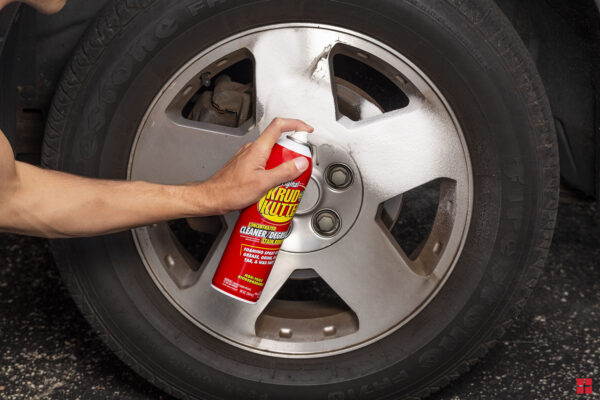
How do I apply wheel spray paint remover safely and effectively?
Here’s a step-by-step guide to help you remove paint from your rims, whether it’s spray paint or regular paint while protecting the surface and achieving the best results:
Preparation: Ensure you are working in a well-ventilated area to avoid inhaling fumes. Gather all necessary instruments: paint stripper, paint thinner, spray paint remover, pressure washer, power washer, rubbing alcohol, brush attachment, steel wool, work light, mineral spirits, and a cloth. Wear gear, including gloves and glasses, to protect your skin and eyes.
Clean the Rims: Use a power washer to remove dirt and grime from the rims. This ensures the spray paint remover works more effectively. Dry the rims thoroughly with a cloth.
Apply the spray Paint Remover: Select the right paint remover for your rims. For example, Smart Strip is a good choice for general paint removal, while specific products are available for removing spray paint. Apply a generous amount of spray paint remover to the affected area. Use a wire brush for even application, ensuring all painted surfaces are covered.
Let it Sit: Allow the spray paint remover to sit on the surface for the recommended time as per the product instructions. This will help to break down the paint effectively.
Remove the Paint from the wheels: Use a brush attachment to scrub the surface gently, loosening the paint. For stubborn paint, steel wool can help to remove paint without scratching the metal. A knife can be used to scrape off softened paint, but be careful not to damage the chrome rims.
Rinse and Clean wheels: Rinse the rims with a pressure washer to remove all traces of paint and spray paint remover. Wipe down the rims with a cloth soaked in rubbing alcohol to remove any remaining residues.
Final Touches: For a thorough clean, use mineral spirits to wipe down the rims, ensuring no chemical residues are left behind. Inspect the rims under a work light to ensure all painting has been removed and the surface is clean.
Using the right tools and following these steps will make the job easier and ensure the paint is effectively removed from your rims. This DIY approach not only saves money but also allows you to maintain your wheels in the best possible condition.
What is the best method for removing softened paint from wheels?
The best method to remove spray paint from wheels involves a combination of scrubbing, wiping, and pressure cleaning. Each method has its advantages and is suitable for different stages of the paint removal process. Here’s a detailed guide on how to use each method effectively:
Scrubbing
When to use: scrubbing is ideal for loosening and removing softened colour after it has been treated with a spray colour remover or paint lacquer thinner.
Tools needed: use a wire brush attachment, steel wool, or a soft brush to avoid scratching the chrome wheels.
Process remove spray paint thinner
After applying the spray paint remover and allowing it to sit for the recommended time, scrub the affected area gently. Focus on small sections at a time to ensure thorough paint removal. Scrubbing helps to lift and remove paint, especially in areas where the colour is peeling or thin.
Advantages: effective for detailed cleaning and reaching intricate parts of the wheels.
Wiping
When to use: wiping is useful for cleaning up the wheels after the majority of the colour has been removed through scrubbing.
Tools needed: use a cloth or a microfiber towel.
Process: after scrubbing, wipe down the wheels with a cloth to remove any remaining paint and debris. Dampen the cloth with a small amount of paint thinner or rubbing alcohol to help dissolve any residual paint. Ensure the surface is completely clean and free of any paint particles.
Advantages: gentle on the rims and helps to clean up leftover paint without causing damage.
Pressure cleaning before you start to remove spray paint
When to use: pressure cleaning is effective for rinsing off loosened paint and cleaning the rims thoroughly after scrubbing and wiping.
Right tools needed: use a pressure washer or a power washer.
Process: after scrubbing and wiping the rims, use a pressure washer to rinse off any remaining paint and dirt. Hold the pressure washer at a safe distance to avoid damaging the chrome surface. Ensure the water pressure is sufficient to remove spray paint but not too high to cause damage to the rims.
Advantages: efficient for cleaning large areas and ensuring all paint residues are washed away.
Combined method to remove spray paint
Preparation: clean the rims with a pressure washer to remove initial dirt.
Apply paint remover: cover the rims with a spray paint remover suitable for your type of paint and chrome surface.
Scrubbing: After the paint has softened, scrub the rims gently to remove spray paint.
Wiping: wipe down the rims with a soft cloth dampened with paint thinner to remove any remaining paint.
Pressure cleaning: rinse the rims thoroughly with a pressure washer to ensure all paint and chemical residues are removed.
Final inspection: inspect the rims to ensure they are clean and free of paint. Repeat any steps if necessary.
By combining scrubbing, wiping, and pressure cleaning, you can effectively remove spray paint and other types of paint from your chrome rims without causing damage. This process ensures that the rims are thoroughly cleaned and ready for any further painting or coating.

What safety precautions should I take when using wheel spray paint remover?
When using rim spray paint remover, it’s essential to follow safety precautions to protect yourself and ensure effective results. Here’s a comprehensive guide:
Safety gear
Protective clothing: wear long sleeves, long pants, and closed-toe shoes to protect your skin from chemicals.
Gloves: use rubber or chemical-resistant gloves to protect your hands from spray paint remover and paint thinner.
Safety glasses: protect your eyes from splashes and fumes by wearing glasses or goggles.
Mask: use a mask or respirator to avoid inhaling harmful fumes, especially when working with spray paint removers.
Workspace preparation
Ventilation: work in a well-ventilated area to prevent the buildup of fumes. Outdoors are ideal, but if indoors, ensure windows and doors are open and use fans to circulate air.
Clean surface: before applying the spray paint remover, wash the rims to remove dirt. This ensures the remover works more effectively on the paint.
Cover surrounding areas: protect nearby surfaces, parts of your car, and wheels from splashes by covering them with plastic sheets or old newspapers.
Application process
Read instructions: carefully read the instructions on the paint remover product to understand the proper application method and safety precautions.
Apply a small amount: test the paint remover on a small, inconspicuous area of the rim to ensure it doesn’t damage the surface.
Apply evenly: when applying the remover, ensure it covers the paint evenly. Use a brush if necessary for even application.
Avoid over-application: use a thin, controlled amount of remover to avoid excessive chemical exposure and minimize waste.
During paint removal
Avoid direct skin contact: do not touch the spray paint remover with bare hands. If contact occurs, wash immediately with soap and water.
Proper instruments: use appropriate instruments like a knife, brush, or steel wool to remove paint without scratching the rims.
Work in sections: work on small sections at a time to maintain control and ensure thorough removal.
After you remove paint
Rinse thoroughly: wash the rims thoroughly with water to remove any residual paint remover. Use a washer if available.
Neutralize: use a mild detergent to neutralize any remaining chemicals on the rims.
Dry Completely: dry the rims with a clean, soft cloth to prevent water spots and corrosion.

Should I apply a protective coating or wax to the rims?
Applying a protective coating or wax to your rims after removing spray paint is highly recommended. Here’s why you should consider it and how to do it effectively:
Benefits of applying a protective coating or wax
Protection from elements: after you remove the paint, the rims are more vulnerable to environmental damage. A protective coating or wax shields them from dirt, road grime, and corrosive elements like salt.
Enhanced appearance: coating or waxing your rims can give them a polished, glossy finish that enhances the overall look of your car.
Ease of cleaning: protective coatings make it easier to clean your rims, as dirt and brake dust are less likely to adhere to the surface.
Extended lifespan: regularly applying a protective layer helps prevent rust and corrosion, thereby extending the lifespan of your rims.
Steps to apply a protective coating or wax
- Prepare the rims:
Clean thoroughly: before applying any protective product, ensure the rims are clean. Remove any remaining dirt or residue from the process of removing paint.
Sand if necessary: if the top is rough or has minor scratches, lightly sand the rims to create a smooth base for the coating.
- Choose the right product:
Protective coating: look for a high-quality wheel sealant or ceramic coating specifically designed for rims. These products offer long-lasting protection.
Wax: if you prefer a simpler option, choose a car wax suitable for metal surfaces. Ensure it’s designed to withstand high temperatures and harsh conditions.
- Application process:
Apply in a well-ventilated area: like when you remove spray paint, ensure you work in a well-ventilated space.
Use proper tools: use a soft cloth or applicator pad to apply the coating or wax. Follow the product instructions for the best results.
Apply evenly: spread the product evenly over the entire top of the wheel, covering all nooks and crannies.
Allow to dry: let the product dry according to the manufacturer’s instructions. Some coatings may require curing under specific conditions.
Buff for shine: if you’re using wax, buff the rims with a clean, soft cloth to achieve a high-gloss finish.
- Regular maintenance:
Reapply as needed: protective coatings may need reapplication every few months, while wax may need to be reapplied more frequently.
Clean regularly: keep the rims clean to maintain the protective layer and ensure maximum longevity.
Considerations
Type of rims: ensure the product you choose is suitable for your specific type of rims, whether they are aluminum, chrome, or another material.
Weather conditions: If you live in an area with harsh weather conditions, such as salty roads in winter, consider using a more durable protective coating.
Driving habits: Frequent driving on rough or dirty roads may necessitate more frequent application of protective coatings or wax.
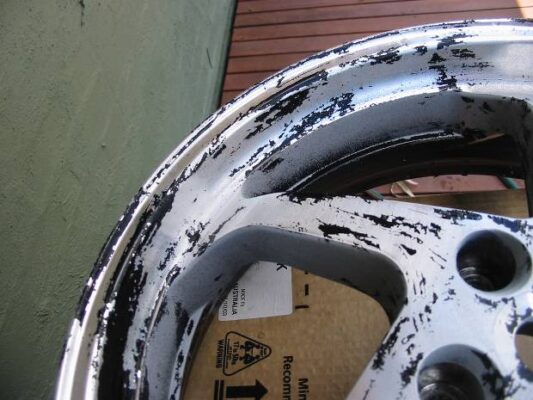
Conclusion about removing spray paint
In conclusion, removing spray paint is a valuable tool for effectively restoring wheels by addressing various paint issues. Whether you’re dealing with removing spray paint or other types of coatings, several methods can be employed to achieve a clean surface. Sand is a common technique for stripping away old paint and preparing the wheel for a new layer. For more stubborn paints, including spray paint, specialized paint removers can provide efficient results. Combining these methods, such as using chemical removers along with sanding, can ensure a thorough cleaning.
Ultimately, using the right approach for removing paint will help in achieving a smooth, ready-to-paint surface and maintaining the appearance and functionality of your wheels.

Matthew Edward is a professional painter who loves to paint and wants to share useful tips and tricks which he had learned in many years of experience in painting. He also used many products that can be used for painting he has tried and tested each and every product to give an unbias opinion about it in his review. This blog is very useful for those newbies who want to learn painting without making mistakes.


